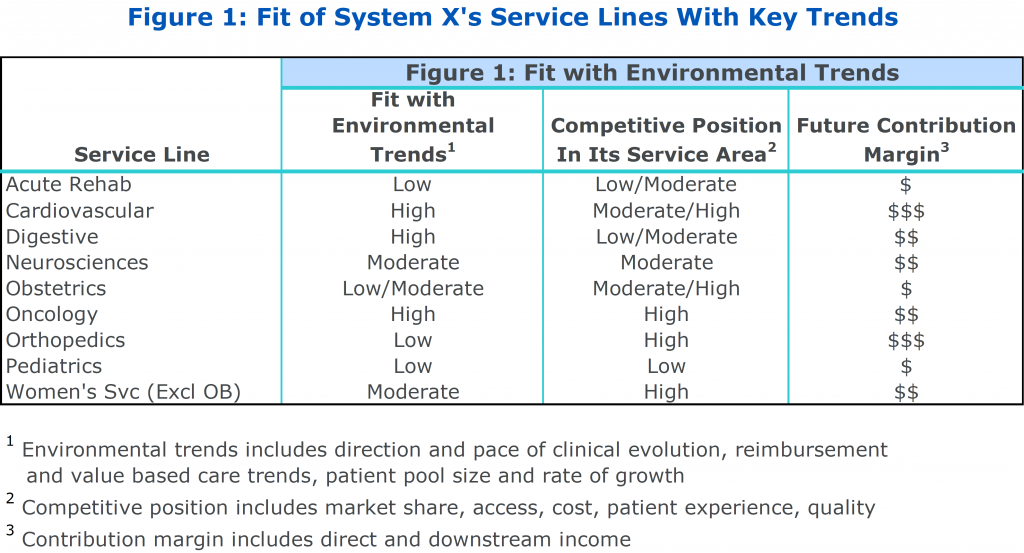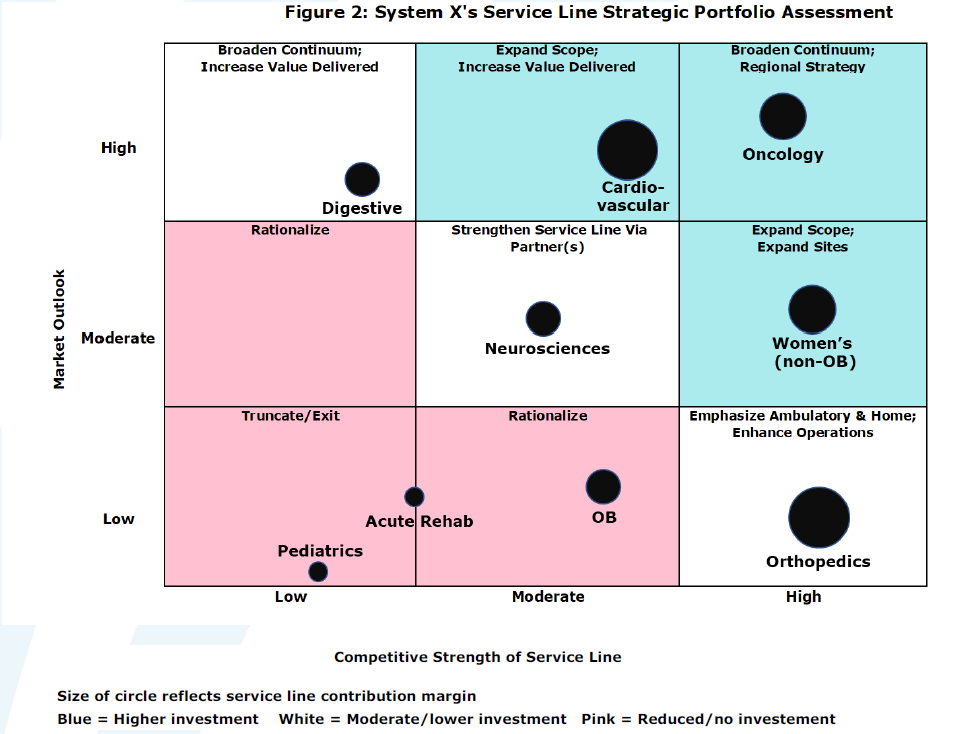Prioritize Service Lines During Challenging Times
Analyzing and prioritizing service lines like a portfolio can support focused growth, even during a financial crisis.
Cost cutting is critical but insufficient to ensure viability and success when the financial crisis faced by health systems is prolonged, as it has been in 2022. Health systems must also grow revenue.
Tight budgets and limited access to capital restrict the ability of healthcare organizations to invest in revenue growth opportunities. Under this dynamic, it is crucial that multi-hospital systems treat their service lines like a portfolio, proactively prioritizing and reconfiguring resource allocation. This portfolio analysis will help leaders better prepare their organization for success in 2023.
Step 1: Assessing Your Service Line Portfolio
Organizations should complete a streamlined assessment of each service line based on three factors:
- Market Outlook – degree to which a service line is consistent with market trends (clinical evolution, reimbursement/value-based care, technology, new entrants)
- Competitive Position – for the service line in general and each site
- Contribution Margin – current and potential future contribution margin of the service line
The analysis should be both strategic and financial in nature. To minimize biases, internal politics and the natural occurrence of protectionism, it can be helpful to have an independent party complete the analysis and/or facilitate the process of assigning the ratings.
Step 2: Prioritizing Allocation of Resources
The second analytic step is to prioritize the service lines in a manner that establishes the rationale for the future resource allocation each should receive.
To do so, it is helpful to interpret the evaluative findings from Figure 1 and prioritize the service lines using a modified version of McKinsey’s nine-cell market trends-competitive position grid (see Figure 2).
Those service lines that are determined to fit in one of the blue cells and have an attractive future contribution margin merit further enhancement and growth and should receive the highest investment of capital as well as other resources (e.g., staff and time).
Attention should be directed to reconfiguring and enhancing the service lines that fit within the white cells. These service lines warrant a moderate to lower investment.
In many organizations, an analysis of this type reveals one or more service lines that fall within the pink-shaded cells. In some instances, these cells reflect services that have both a lower contribution margin and a high level of resource requirements. In systems that offer those services at multiple locations within the same service area, there may be opportunities to consolidate/rationalize the sites and, in some cases, truncate or exit those service lines entirely. Some health systems opt to rationalize resource-intensive service lines such as cardiovascular, neurosciences, NICU, and PICU. Other hospitals and systems have opted to exit pediatrics or obstetrics.
Taking Steps for Service Line Success
Achieving enhanced financial performance and a competitive position in 2023 requires optimal use of scarce resources to support focused growth. A rigorous, objective strategic financial assessment and prioritization of service lines will position hospitals and systems to make these difficult decisions.
For a more in-depth understanding of how this analysis could enhance your strategy and capital allocation decisions, contact us.
Contact the Author:
Mark Dubow, Director, mdubow@veralon.com

